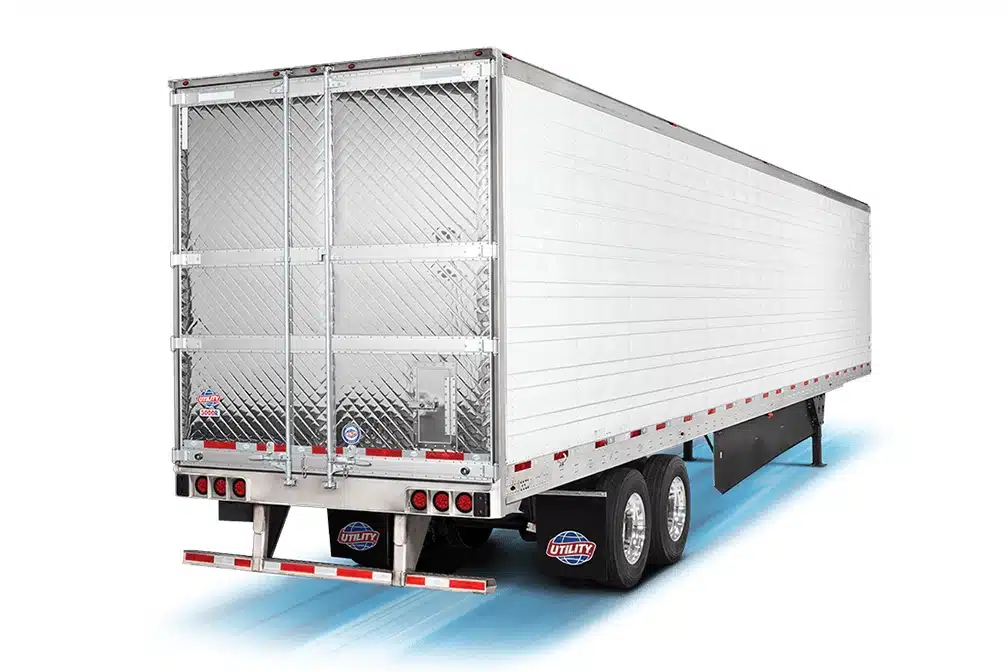Exploring the Pros and Cons of Renewable Diesel and Its Potential for Cleaner, Greener Options for the Trucking Industry.
More
May 19, 2024 3:36 pm

Reverse lights are a ubiquitous safety feature found on most vehicles, aiding drivers in safely maneuvering in reverse, especially during low-light conditions. However, an interesting observation is the lack of standard reverse lights on van and reefer trailers, which are commonly utilized in the transportation industry. This omission has prompted discussions about safety, convenience, and practicality. This article delves into the reasons behind the absence of reverse lights on these trailers and explores the potential benefits that could arise from their implementation.
The primary purpose of reverse lights is to enhance safety by providing drivers with improved visibility, enabling them to identify obstacles and pedestrians while reversing. This is particularly vital for larger vehicles like trucks and trailers, which have more extensive blind spots and require precise navigation in confined spaces. The absence of reverse lights makes the process of reversing a van or reefer trailer inherently riskier, especially during nighttime or in poorly illuminated areas. The potential accidents resulting from limited visibility could lead to property damage, injuries, or even fatalities.
The absence of reverse lights on van and reefer trailers can be traced back to historical norms and regulations in vehicle design. In earlier times, trailers were primarily used for cargo transportation and were not designed to operate independently. Trucks or tractor units towed trailers, and these units were equipped with reverse lights. Therefore, the concept of installing reverse lights directly on trailers themselves was not deemed essential.
A significant factor contributing to the lack of standard reverse lights on trailers is the issue of cost. The installation and maintenance of reverse lights across an entire fleet of trailers require both initial investment and ongoing expenses. For transportation companies managing extensive fleets, these costs can accumulate significantly over time. In the fiercely competitive landscape of the industry, some companies might prioritize cost savings over safety features that are not legally mandated.
Regulations within the transportation industry have evolved over time, with different countries adopting varying safety standards for vehicles. While reverse lights are commonly required on passenger vehicles and trucks, regulations regarding trailers differ from one region to another. Some jurisdictions might not specifically mandate reverse lights on trailers, allowing manufacturers and companies to bypass this feature without facing legal consequences.
Implementing standard reverse lights on van and reefer trailers could yield numerous benefits:
Enhanced Safety: The most prominent advantage is a substantial improvement in safety. By providing better visibility during reversing, the likelihood of accidents and collisions can be significantly diminished. This safeguards not only the trailer operator but also pedestrians and property in the vicinity.
Efficient Maneuvering: Reverse lights offer invaluable assistance to drivers while navigating trailers in tight spots or congested areas such as loading docks. Accurate maneuvering not only prevents accidents but also expedites the movement of goods, contributing to operational efficiency.
Smoother Traffic Flow: The integration of reverse lights can minimize confusion for fellow drivers, pedestrians, and loading dock personnel. This, in turn, can prevent unnecessary traffic congestion and delays stemming from uncertain trailer movements. A streamlined traffic flow benefits both the transportation company and the overall road network.
Reduced Liability: The inclusion of reverse lights might enable transportation companies to mitigate their liability in accidents involving trailers. By showcasing a commitment to comprehensive safety measures, these companies can demonstrate their efforts to minimize associated risks, potentially leading to lower insurance costs.
Standardization: The incorporation of reverse lights as a universal feature across all trailers could establish a new industry benchmark for safety. This move would not only encourage other manufacturers and operators to adopt similar practices but also contribute to an elevated safety standard across the industry.
While historical practices, cost considerations, and regulatory factors offer context for the absence of reverse lights on van and reefer trailers, the benefits of implementing this vital safety feature are undeniable. Enhanced visibility during reversing not only reduces the probability of accidents but also contributes to smoother traffic flow and sets a higher safety standard for the entire industry. It is imperative for trailer manufacturers, transportation companies, and regulatory bodies to collaboratively reassess the necessity of reverse lights on trailers, with a shared commitment to prioritizing the well-being of all road users. This step is essential to ensuring a safer and more efficient transportation landscape for everyone involved.
Exploring the Pros and Cons of Renewable Diesel and Its Potential for Cleaner, Greener Options for the Trucking Industry.
MoreThe tragic loss of Chief Financial Officer Daimler Truck Holding, Jochen Goetz, who died on August 5, 2023, has been a devastating one, whereby the company has
MoreWith FedEx's current contract ending effective September 29th, UPS is on track to become the go-to for flying the United States Postal Service's cargo.
MoreThe American Trucking Associations (ATA) has expressed strong opposition to the Department of Justice's proposed rule of marijuana reclassification.
MoreIn an effort to increase efficiency and sustainability in Trucking, Phillips Industries has launched their new, advanced, stick-on solar panels
MoreThe 2024 CVSA International Roadcheck is scheduled for May 14-16. Over 72 hours, inspectors across the US will conduct nearly
MoreAutomated License Plate Readers are a major advance in law enforcement technology but they raise significant privacy and oversight challenges.
MoreThe EPA's latest emission standards detailed in a final rule issued on March 29 are sparking vigorous debate within the
More